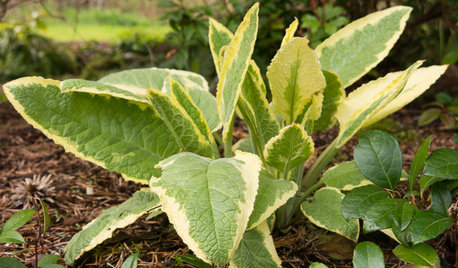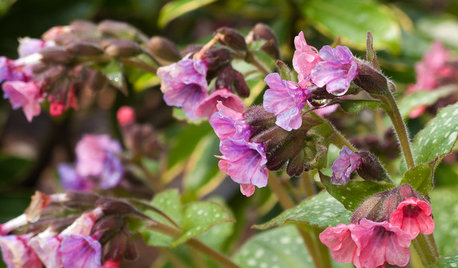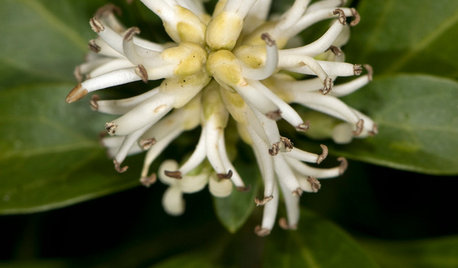Hosta Survival
mstrpbk
10 years ago
Related Stories

GARDENING GUIDESHave Acidic Soil in Your Yard? Learn to Love Gardening Anyway
Look to acid-loving plants, like conifers and rhododendrons, to help your low-pH garden thrive
Full Story
CURB APPEAL9 Ways to Boost Winter Curb Appeal
No blossoms and a barren yard? You can still make your home attractive and inviting from the street
Full Story
EARTH DAYThe Case for Losing the Traditional Lawn
Work less, help the environment and foster connections by just saying no to typical turf
Full Story
GARDENING GUIDESGreat Design Plant: Axminster Gold Comfrey for Sun or Shade
Plant this perennial for bold color that will light up shady spots, sparkle in the sun and add interest from spring until fall
Full Story
GARDENING FOR BUTTERFLIESGreat Design Plant: Lungwort
Yes, the name is unfortunate. But the flowers and foliage are delightful, and this perennial is easy to grow and shunned by deer
Full Story
GARDENING GUIDESHow to Use Pachysandra Responsibly in the Landscape
It's tops at covering lots of ground quickly, but be sure this low evergreen plant doesn't spread where it shouldn't
Full Story
CONTAINER GARDENS7 Deer-Resistant Flowers for Your Summer Containers
Grow these as protection for edibles or just for their colorful beauty — deer might not like them, but everyone else will
Full Story
GARDENING GUIDESOh, Deer! 10 Native Flowers That Stand Up to the Herds
Keeping a garden amid hungry deer can be hard, but these plants should fare well
Full Story
GARDENING GUIDESTop 12 Summer-Blooming Perennials for Deer-Resistant Drama
Can you have garden color, fragrance and exciting foliage with hungry deer afoot? These beauties say yes
Full Story
FALL GARDENING7 Reasons Not to Clean Up Your Fall Garden
Before you pluck and rake, consider wildlife, the health of your plants and your own right to relax
Full StoryMore Discussions







mstrpbkOriginal Author
don_in_colorado
Related Professionals
Fillmore Landscape Architects & Landscape Designers · Hyattsville Landscape Architects & Landscape Designers · Kyle Landscape Architects & Landscape Designers · Caldwell Landscape Contractors · Darien Landscape Contractors · Fort Mill Landscape Contractors · Hurricane Landscape Contractors · Miller Place Landscape Contractors · Porterville Landscape Contractors · Charlotte Driveway Installation & Maintenance · Madison Fence Contractors · Silver Spring Fence Contractors · Brentwood Los Angeles Solar Energy Systems · Maple Grove Solar Energy Systems · Palo Alto Solar Energy Systemsdon_in_colorado
mstrpbkOriginal Author
Steve Massachusetts
in ny zone5
josephines167 z5 ON Canada
josephines167 z5 ON Canada
ken_adrian Adrian MI cold Z5
ken_adrian Adrian MI cold Z5
dg
beverlymnz4
josephines167 z5 ON Canada
harryshoe zone6 eastern Pennsylvania
mstrpbkOriginal Author
mstrpbkOriginal Author
dg
mstrpbkOriginal Author
jamie81
beverlymnz4
unbiddenn
newhostalady Z6 ON, Canada
igmommy
User
Babka NorCal 9b
mstrpbkOriginal Author
littlebug5
mstrpbkOriginal Author
mstrpbkOriginal Author
mstrpbkOriginal Author
gardens1
mstrpbkOriginal Author
User
mstrpbkOriginal Author
mstrpbkOriginal Author
mstrpbkOriginal Author
mikgag Z5b NS Canada
mstrpbkOriginal Author
mstrpbkOriginal Author
mstrpbkOriginal Author
mstrpbkOriginal Author
mstrpbkOriginal Author
mstrpbkOriginal Author
mstrpbkOriginal Author
Babka NorCal 9b
mstrpbkOriginal Author
don_in_colorado
mstrpbkOriginal Author
Babka NorCal 9b
mstrpbkOriginal Author